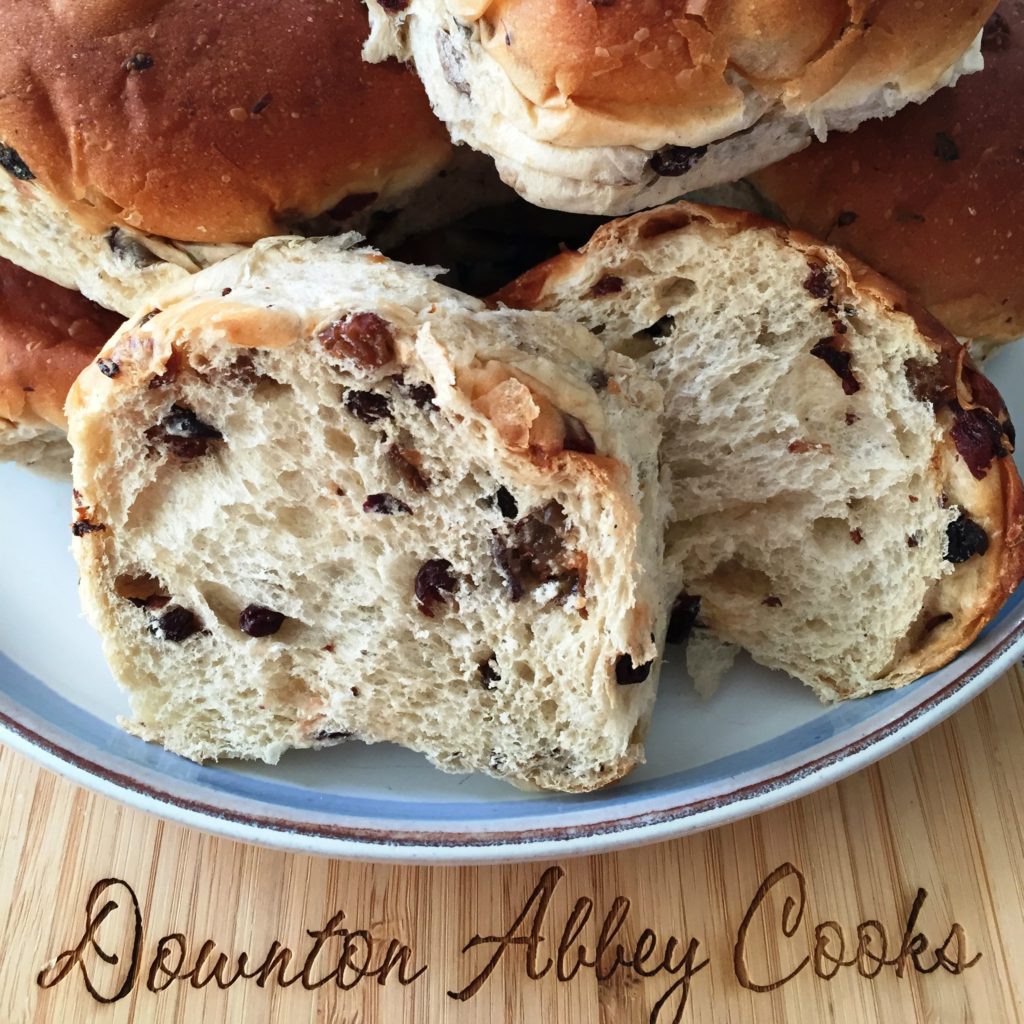Currant buns have graced breakfast and tea trays across England for hundreds of years. Reverend Samuel Wigley founded the Currant Bun Company in Southampton, Hampshire UK in the 17th century. He discovered currants while on mission to the Greek Island of Zakynthos, and brought them back with him to create the currant bun.
The versatile currant spawned a number of favorites. The currant bun is closely related to the Chelsea bun. In 1824 Duncan Higgins adapted Wigley’s recipe to create the classic Chelsea bun at his bakery close to the fashionable Chelsea district in London. It is rolled up like a cinnamon bun.
Print
The Best Currant Buns
The Currant buns have graced English tea trays for hundreds of years. Reverend Samuel Wigley founded the Currant Bun Company in Southampton, Hampshire UK in the 17th century. Currant buns are closely related to the Hot Cross bun which predates the Chelsea bun (1733).
Servings 12 currant buns
Ingredients
- 1/2 cup lukewarm water
- 1/2 cup Granulated sugar
- 1 package active dry yeast (1 tbsp.)
- 3 1/2 cups all-purpose flour
- 1/2 tsp. salt
- 3/4 cup warm milk
- 1/4 cup butter, melted
- 2 eggs
- 1/2 cup currants (I like to soak them for a few minutes to plump them up)
- 2 tbsp. icing sugar
- 1 tbsp. water
Instructions
- In a small bowl or measuring cup, combine warm water and 1 tbsp. of the sugar, sprinkle yeast over top. Let stand for 10 minutes or until frothy.
- Meanwhile, in a large bowl, blend together remaining sugar, flour and salt. In a small bowl, whisk together the milk, butter, and eggs. Stir in yeast mixture until combined.
- Make well in the dry ingredients; using a wooden spoon, stir in the yeast mixture until a soft dough forms. Turn out the dough onto a lightly floured board. Knead for 8 minutes or until the dough is smooth and elastic. If you are new to working with yeast doughs, aim for 10 -12 minutes to get the hang of it.
- Transfer dough to a large greased bowl, turning to coat. Cover with plastic wrap and let rest in a warm place for 1 hour or until the doubled in bulk. If you can stick 2 fingers in the dough and the indentation remains, you are ready to proceed.
- Punch down; turn out onto floured surface; knead in currants. Shape into a 12-inch long log. Cut dough into 12 equal pieces.
- Roll pieces of dough into smooth, seamless balls. Place buns on greased baking sheet leaving about 2 inches between each bun. Cover loosely and let rest for 30 minutes.
- Bake in 400 F oven for 15 minutes or until golden brown. Stir together icing sugar and water, brush over warm buns; let cool on rack.
Notes
The currant bun is also closely related to the Hot Cross bun which predates the Chelsea bun (1733). This currant bun recipe can easily be transformed into hot cross buns by adding cinnamon, cloves and nutmeg, raisins, and candied peel. You then drizzle a cross with icing sugar mixed with a little milk. Hot cross buns are traditionally served hot or toasted on Good Friday, the cross standing as a symbol of the Crucifixion.
If you like to make a large batch of buns of various types in one go, check out my Granny's sweet bun recipe.

